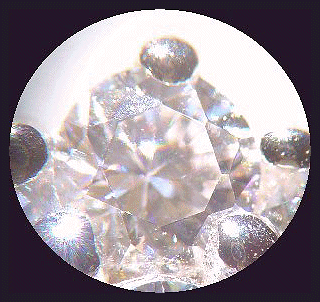Gemstone Examination Lesson
Learning how to conduct a gemstone examination takes practice. Follow an expert gemologist step-by-step through tests of five unknown samples.
7 Minute Read
Gemstone Examination: Example 1
This stone looks like a tourmaline.
I made that initial assessment based partly on its shape (tourmaline crystals are elongated, so rectangular gems are common) and partly on its color (green, but slightly grayish). It’s certainly not an emerald or other chromium-colored gem.
With the loupe, I saw that it’s well-cut. It had some fingerprints and fractures, but no identifying inclusions.
The end facets are black. No light was passing through them. This is called a “closed C axis” and is common to tourmaline, but little else. For our purposes, we’ll simply note that the stone has strong pleochroism.
Next I took a basic refractive index (RI) reading. On the long axis it measured 1.643. Turning it sideways, it read 1.641. I put the stone in the polariscope, which verified that it was doubly refractive. It didn’t show any stress. Since I thought I had enough information to prove it was tourmaline, I didn’t make much effort to find the optic figure and sign.
Reviewing the References
I reviewed my gemological references for stones with the following characteristics:
- Color: green
…
Donald Clark, CSM IMG
Related Articles
Tourmaline Value, Price, and Jewelry Information
A Beginner’s Guide To Common Gemstone Heat Treatments
Tourmaline Engagement Ring Stones: the Ultimate Guide
A Look at African Paraíba Tourmaline Rough
Never Stop Learning
When you join the IGS community, you get trusted diamond & gemstone information when you need it.
Get Gemology Insights
Get started with the International Gem Society’s free guide to gemstone identification. Join our weekly newsletter & get a free copy of the Gem ID Checklist!
